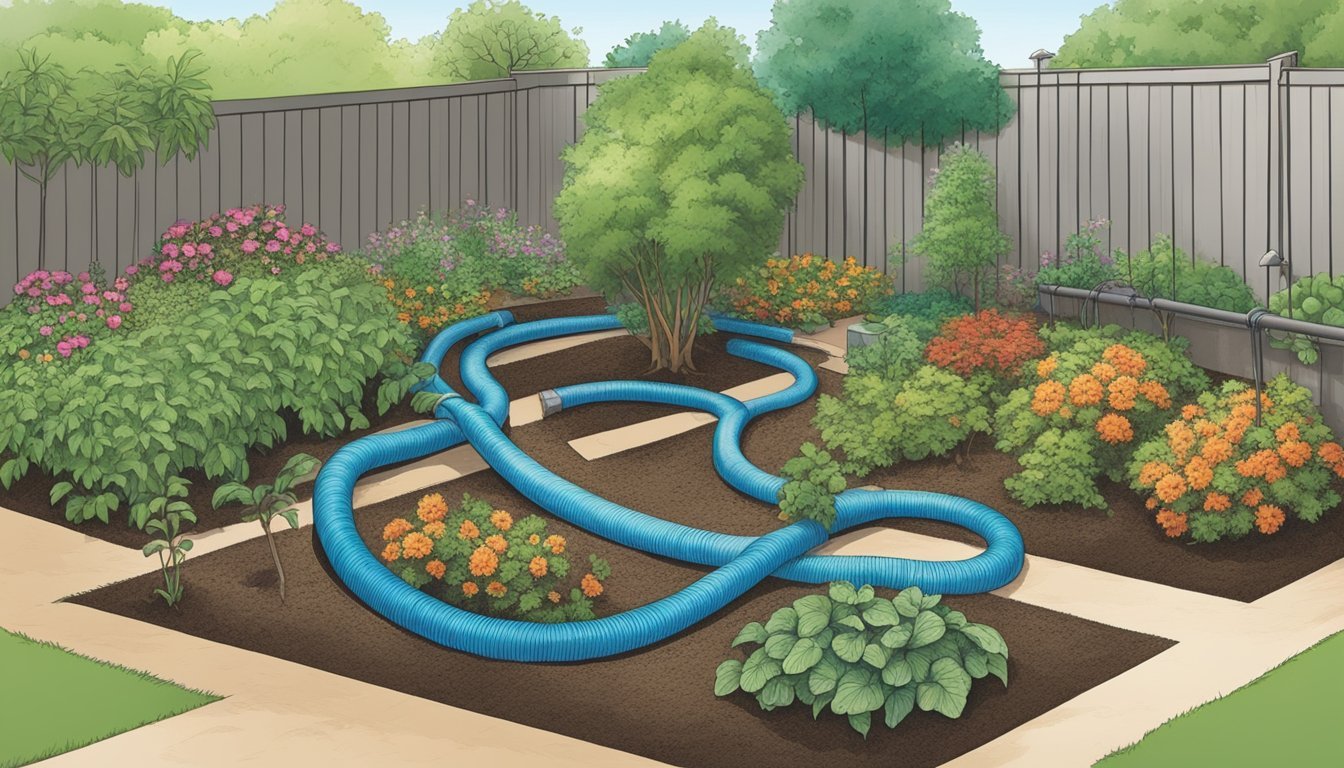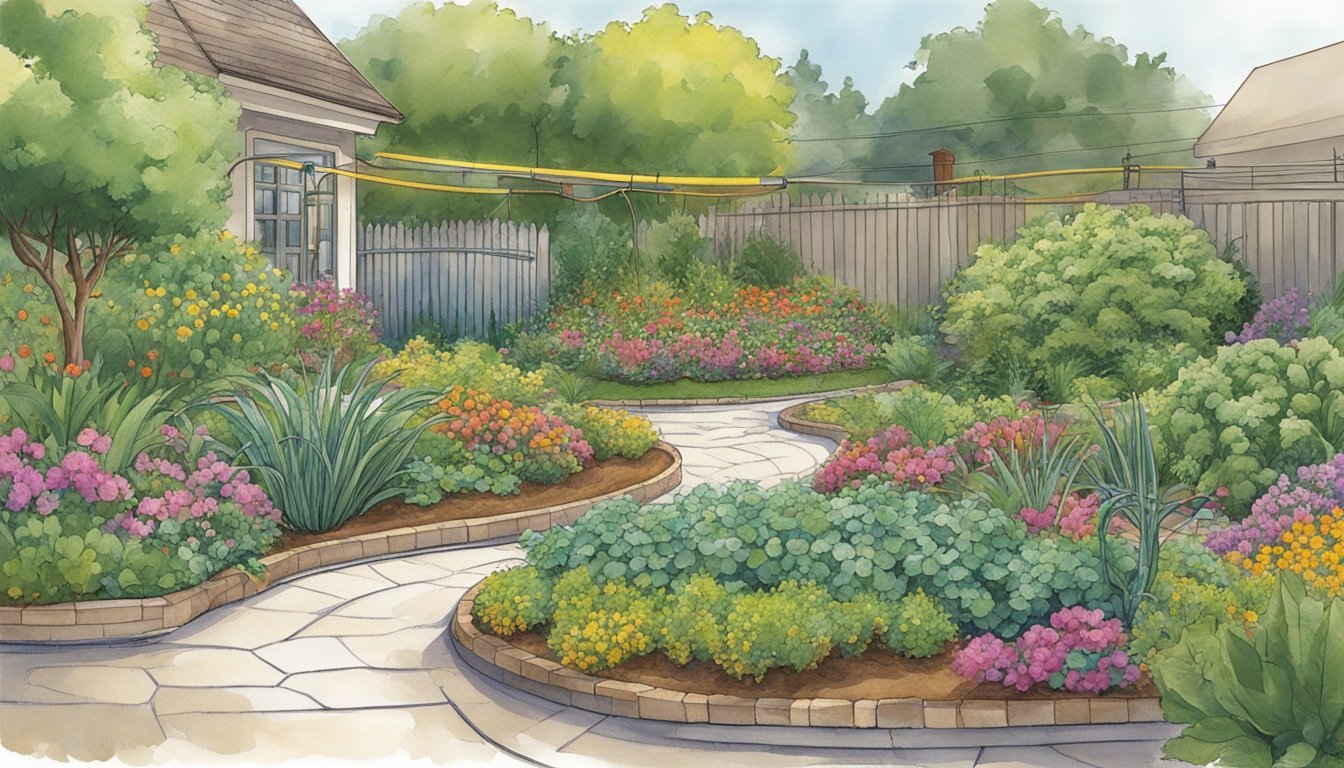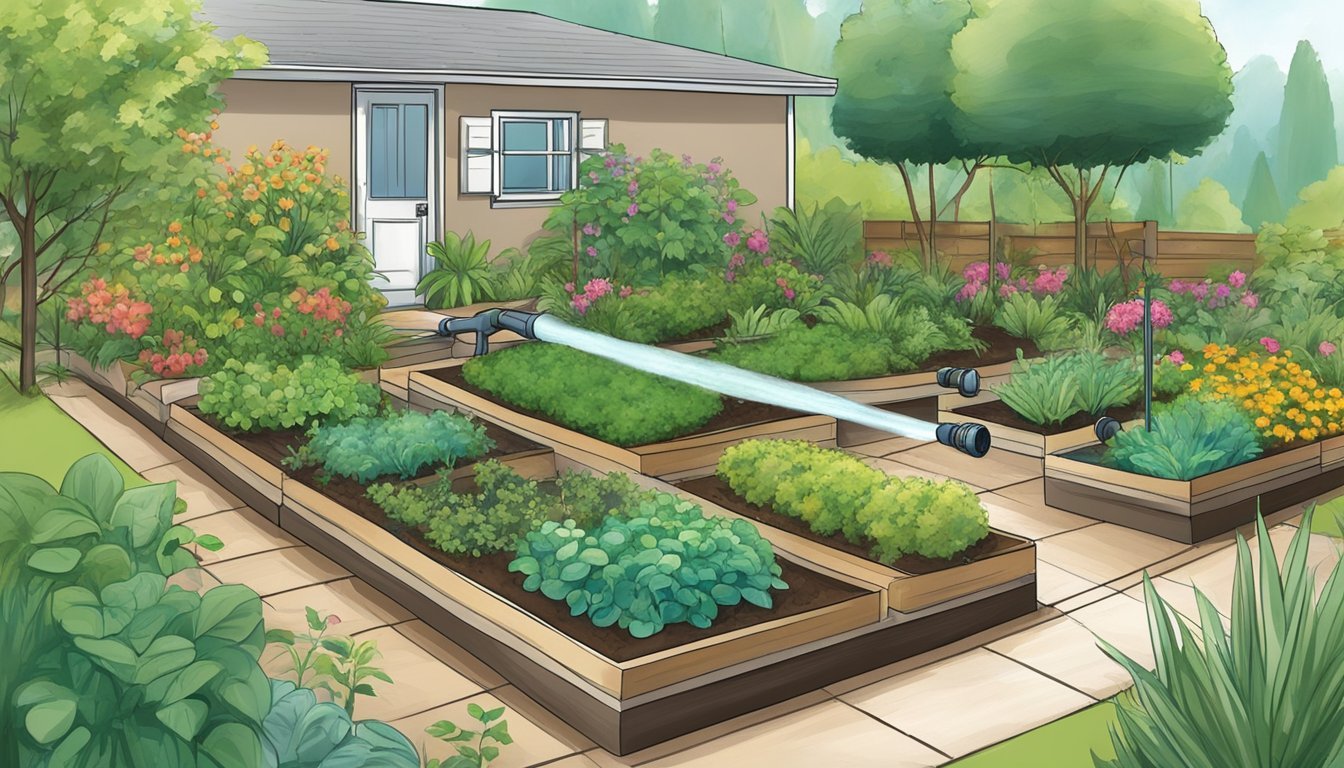Drip Irrigation vs Soaker Hose
Efficiency and Sustainability in Garden Watering
Gardeners often face the challenge of ensuring their plants receive the right amount of water without wastage. Two popular methods that address this issue are soaker hoses or tubes and drip irrigation systems. Both are designed to save water and time, provide convenience, and promote healthy plant growth by delivering water directly to the plants' roots rather than by overhead watering.
Soaker tubes are made from porous materials that allow water to seep out slowly along their length, providing a continuous, even supply of moisture to plant bases. This makes them ideal for watering long, straight rows of plants. Meanwhile, drip irrigation systems consist of a network of pipes fitted with emitters that release water drop by drop at precise locations. This method offers the advantage of customizable emitter placements, allowing for precise watering that can be adjusted to each plant's needs.
Choosing the right watering systems for a garden largely depends on the design and layout of the garden, the crops grown, along with the gardener's budget and water conservation goals. Both systems aim to deliver efficient watering solutions, but the decision between them hinges on their distinct features and how they align with the gardener's objectives.
Understanding Irrigation
Effective irrigation hinges on two fundamental aspects: the precision of watering and the interaction between soil and water, or the soil moisture. These are critical to ensure plant health, water conservation, and saving the grower time and money.
Principles of Watering in Gardening
A watering system in gardening should adhere to the requirements of the plants while minimizing waste. The goal is to create a watering system that meets the plants' needs without over- or underwatering. As a choice of watering system soaker tubes and drip irrigation are two methods gardeners use to achieve this balance. Soaker tubes allow water to seep out along their entire length, providing moisture to the soil over a broad area. In contrast, drip irrigation systems deliver water directly to the base of the plant through a network of valves, pipes, and emitters, facilitating targeted watering that minimizes evaporation and runoff.
The Role of Soil in Irrigation
Soil serves as the reservoir for the water and nutrients that plants need to grow. Watering systems ensure the water reaches the root zone where plants can absorb it. The soil's texture and composition greatly influence irrigation efficiency especially in summer heat:
Sandy soils drain quickly and may require more frequent watering.
Clay soils retain water longer and may need less frequent irrigation to prevent waterlogging.
Loamy soils, which are a balance of sand and clay, are often ideal for maintaining adequate moisture while providing proper drainage.
Both soaker hoses and drip irrigation systems must be adjusted according to the soil type to achieve optimal watering results, ensuring that the roots receive sufficient moisture without excess waste.
Overview of The Soaker Hose
A soaker hose provide a simple and efficient way to water plants, minimizing water wastage and concentrating hydration directly on the plant's roots.
Components and Design
A soaker hose is constructed from a porous material that lets water seep out along its length. They come in two primary shapes: flat and round. The flat soaker hose is often made from a nylon-coated mesh, which makes it malleable and easy to place in the garden. The round soaker hose is usually made of rubber and is more durable and rigid. The design enables a consistent, slow release of water sometimes supplied via the garden hose, which soaks into the soil near plant roots, and can be laid on the ground or buried under mulch.
Advantages of The Soaker Hose
Simple setup: With no need for complex components, they can be connected directly to a water source, sometimes via a garden hose.
Cost-effective: They are generally less expensive than other irrigation systems, as they can be integrated with the existing garden hose.
Water conservation: Water is delivered slowly, reducing runoff and evaporation.
Less clogging: While a soaker hose can still clog over time, their design allows for sediment to filter through the porous material, reducing the frequency of clogs.
Suitable Applications for Soaker Hoses
A soaker hose is well-suited for:
Garden beds: They can be snaked through rows of plants, providing even moisture.
Densely planted areas: Because they water a wide area, they are ideal for garden areas with many plants close together.
Established landscaping: For established plants and trees, a soaker hose offers deep watering that encourages strong root development.
Drip Irrigation Explained
A drip irrigation system is characterized by efficiency and precision, function to deliver water directly to the plant's roots through a network of drip lines and emitters.
Key Features of a Drip Line System
Tubing: The foundation of a drip line system, designed to transport water from the source to the desired locations in a garden or field.
Emitters: Small devices placed along the drip line that dispenses water at a controlled rate.
Pressure Regulator: Ensures that water flows at the correct pressure through the drip lines, which is vital for the consistent performance of emitters.
Drip Line: A drip line is a type of tubing with pre-installed emitters at set intervals. A drip tape is a flattened tube with holes in which is laid out in the same way as a drip tube. Once the water flows through the drip tape it expands to accommodate the water.
Pressure-compensating Emitters: Advanced emitters that maintain a consistent flow rate even under varying water pressures.
Benefits of Drip Systems
Water Efficiency: A drip system delivers water directly to where it's needed most, the plant’s root zone, reducing evaporation and runoff.
Flexibility: A drip system can be customized to suit various landscapes and crop types.
Weed Reduction: Water is targeted to the crops, not the areas between, where weeds commonly grow.
When to Choose Drip Irrigation
Landscapes with diverse plant types: Particularly effective where plants with different water needs coexist.
Areas with water scarcity: Ideal where water conservation is paramount.
Gardens requiring precise watering: Optimal for spaces where only specific plants or zones need to be watered.
In this section, to show how drip systems work they have been broken down into their basic components, highlighting their efficient use of water and the settings in which they are most advantageous.
Installation and Maintenance
The installation process and maintenance routines of irrigation systems are crucial for their efficient and long-lasting operation. Proper setup can prevent issues and reduce the effort required for regular upkeep.
Setting Up Your Irrigation System
Installing a drip irrigation system often involves laying out a hose with emitters at specific intervals, which can be customized to the layout of the garden. These systems may be connected to a timer for automatic watering.
Tools & Materials: Basic drip system kits include tubing, emitters, connectors, and an end-cap.
Installation Steps:
Plan the layout according to plant needs.
Connect the system to a water source with a filter.
Lay the tubing along the plant rows and secure it in place.
Insert emitters and micro-tubing for potted plants if needed.
A soaker hose, on the other hand, is generally more straightforward to install as they only require the hose to be laid on the ground or buried slightly under mulch along the plants you wish to water.
Installation Simplicity: Easier than drip systems, simply connect to the hose and water source.
Cost and Efficiency
When comparing soaker hoses to drip irrigation, gardeners need to consider the initial setup costs and the long-term efficiency of each system.
Evaluating the Cost-Effectiveness
Soaker hoses present a more affordable initial investment.
Initial cost: Low to moderate
System components: Minimal; hoses and connectors are often all that's required.
Drip irrigation systems, in contrast, can be more expensive to install initially.
Initial cost: Moderate to high
System components: Extensive; includes tubing, emitters, filters, and pressure regulators.
Despite the lower upfront cost of soaker hoses, drip irrigation systems may prove to be more cost-effective over time due to better longevity and potentially lower repair and replacement costs.
Water Usage and Conservation
Soaker hoses allow for:
Water seepage along the entire length of the hose.
Potential for overwatering and water waste if not monitored closely.
Drip irrigation is recognized for its efficient use of water.
Direct delivery: Emitters precisely target the root zone of each plant.
Water savings: Reduced evaporation and runoff.
By providing water directly where it is needed, drip irrigation systems can lower the total volume of water used, which can lead to decreased water bills and make the system more environmentally friendly.
Comparing Soaker Hoses and Drip Irrigation
When considering watering solutions, gardeners often weigh the benefits of soaker hoses against drip irrigation systems. Each system has its specific advantages and areas of best use, particularly in terms of garden size and plant type.
Pros and Cons of Each System
Soaker Hose System
Pros:
Water Conservation: Soaker hoses reduce water usage by allowing water to seep into the ground, targeting plant roots directly.
Ease of Use: They are straightforward to install and operate, making them suitable for amateur gardeners.
Cost-Effective: Typically less expensive than drip systems, soaker hoses are budget-friendly for small-scale gardeners.
Cons:
Limited Range: They're not ideal for larger gardens due to pressure loss over long distances.
Water Distribution: May provide uneven water distribution in uneven terrain or for plants with varying water needs.
Durability: Soaker hoses are prone to clogging and might require more frequent replacement than drip lines.
Drip Irrigation System
Pros:
Precision: Offers targeted watering at the base of each plant, reducing weed growth.
Customizable: Can be adapted to fit a variety of garden layouts and plant requirements.
Efficient for Large Areas: Better suited for larger gardens and commercial applications due to consistent water pressure.
Cons:
Complexity: Setup can be more involved, potentially requiring professional assistance.
Initial Cost: They are generally more expensive due to the need for additional components like pressure regulators and filters.
Maintenance: Requires monitoring and maintenance to prevent clogging and to repair leaks.
Selecting the Right System for Your Garden
Garden Size and Layout
Soaker Hoses: Best for small to medium-sized gardens or raised beds where plants are arranged in rows.
Drip Irrigation: More effective for large, sprawling gardens or complex garden layouts with various plant types.
Watering Needs
Soaker Hoses: Suitable for areas with uniform plant types that require equal amounts of water.
Drip Irrigation: Ideal for diverse gardens where individual watering needs must be met, as drip emitters can be regulated to dispense different amounts of water.
By considering the specific needs of their garden, such as size and the watering needs of different plants, gardeners can make an informed decision between soaker hoses and drip irrigation systems.
Customization and Flexibility
When considering irrigation systems, gardeners often seek solutions that can be tailored to their specific garden layouts and growing conditions. Both soaker hoses and drip irrigation offer varying degrees of customization and the flexibility to adapt to complex garden designs.
Adapting Systems to Garden Layout
Soaker Hoses: These are often favored for their simplicity in installation. They are laid out on the ground and can be easily snaked around plants, making them particularly suitable for dense plantings and established garden beds. Soaker hoses can be buried under mulch to minimize evaporation and are flexible enough to configure in various patterns such as spirals for tree rings or straight lines along rows.
Drip Irrigation: This system's hallmark is its highly customizable nature. It consists of a network of tubes that can be cut and fitted with components like emitters and micro-sprayers to target specific plants. Drip irrigation can deliver water directly to the root zone of each plant, which is ideal for mixed plantings and reduces water waste.
Adding Components and Expanding
Soaker Hoses: Expansion is fairly straightforward. Gardeners can connect additional lengths of hose to cover more ground. However, one should monitor the water pressure, as adding too much hose can lead to uneven watering if the water source doesn't supply sufficient pressure.
Drip Irrigation: It allows for easy addition of components, and the system can grow along with the garden. Dripline can be extended, and extra emitters can be installed where needed. One can also adjust water flow to each plant, which is beneficial for gardens with a variety of plants with different watering needs.
Special Considerations and Adaptations
When installing irrigation systems, there are key considerations regarding the landscape's topography and localized environmental conditions. These factors greatly affect both the system's efficiency and the health of the plants.
Environmental Impact and Sustainability
Making ecologically responsible choices in gardening can significantly affect water usage and the sustainability of resources. Using eco-friendly materials and optimizing water management is essential for minimizing the environmental footprint.
Eco-Friendly Materials and Practices
Soaker hoses often consist of recycled rubber, providing a sustainable option for environmentally conscious gardeners. By repurposing rubber, these hoses reduce landfill waste and the demand for new rubber production. Additionally, gardeners should seek BPA-free products to prevent the leaching of potentially harmful chemicals into the soil.
Materials: Look for soaker hoses made from 100% recycled rubber and labeled BPA-free.
Practices: Implementing sustainable practices, such as using hoses in conjunction with rain barrels, can maximize the use of available rainwater, thereby reducing dependence on municipal water sources.
Water Conservation and Management
Drip irrigation systems can be incredibly effective in conserving water. These systems can be equipped with water meters and pressure reducers to precisely control water flow, ensuring that plants receive the right amount without excess. Utilizing drip irrigation also reduces runoff and evaporation.
Water Meters: Including a water meter can aid in tracking usage, promoting awareness, and preventing overwatering.
Pressure Reducers: Integrating pressure reducers in a drip irrigation setup helps maintain consistent water delivery, which is critical in areas with high water pressure.
In conclusion, both soaker hoses and drip irrigation systems offer benefits for environmental sustainability when chosen and utilized thoughtfully.






